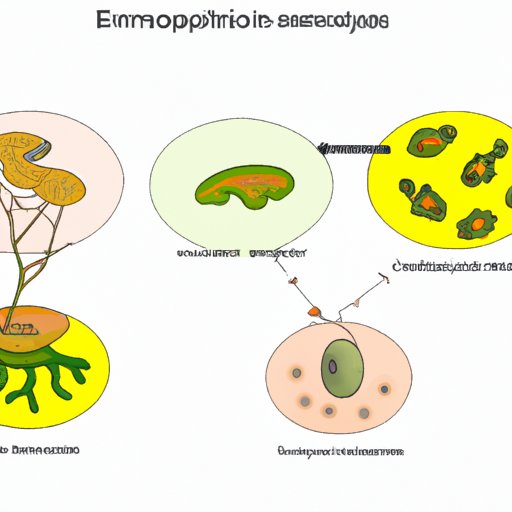Introduction
The endosymbiotic theory is a scientific theory that explains the origin of eukaryotic cells. It suggests that mitochondria and chloroplasts were once free-living bacteria that were taken up by larger cells and then evolved into the organelles that we know of today. This theory has revolutionized our understanding of biology and has major implications for our understanding of evolution. In this article, we’ll explore the endosymbiotic theory in detail, from its origins to its modern-day importance.
Understanding The Endosymbiotic Theory: Exploring The Symbiotic Relationship Between Cells
Endosymbiosis is a type of symbiosis in which one organism lives inside another organism. The endosymbiotic theory describes a symbiotic relationship between cells in which one cell engulfs another cell, but instead of digesting it, the two cells form a partnership. In the case of eukaryotic cells, the theory suggests that a large cell engulfed a smaller cell that went on to become mitochondria or chloroplasts.
The importance of symbiosis in the natural world cannot be overstated. Many organisms could not exist without their symbiotic partners, and symbiotic relationships can shape entire ecosystems. Understanding symbiosis is crucial to understand the complexity of life on earth.
From Bacteria to Eukaryotes: The Endosymbiotic Theory Explained
The endosymbiotic theory originated in the 1960s when Lynn Margulis proposed that eukaryotic cells evolved through a process of merging with smaller, free-living prokaryotic cells that eventually became organelles. One of the main pieces of evidence supporting this theory is the similarity between mitochondria and certain bacteria. For example, mitochondria have their own DNA, which is circular like the DNA of bacteria. Another piece of evidence is that both mitochondria and chloroplasts divide by a process similar to that of bacteria.
The endosymbiotic theory explains the evolution of eukaryotic cells. It suggests that the first eukaryotic cells evolved from prokaryotic cells in a process known as endosymbiosis. Over time, these cells evolved to become the various eukaryotic organisms that exist today. This process of eukaryotic evolution took place over millions of years and has given rise to the incredible diversity of life we see on earth today.
Unlocking the Secrets of Life’s Origins: An In-Depth Look at The Endosymbiotic Theory
One of the key pieces of evidence supporting the endosymbiotic theory is the striking similarity between mitochondria and certain bacteria. Mitochondria have their own DNA, which is circular and resembles bacterial DNA. They also divide in a way that is similar to bacteria, by a process known as binary fission. The chloroplasts found in plants show similar resemblances to cyanobacteria.
Another pieces of evidence supporting the endosymbiotic theory is genetic evidence. DNA studies have shown that mitochondria and chloroplasts are more closely related to free-living bacteria than to the cells they inhabit. In addition, these organelles contain genes that code for certain traits, much like free-living bacteria.
The Endosymbiotic Theory and Evolution: Shedding Light on the Complexity of Life
The endosymbiotic theory has significant implications for our understanding of evolution. Endosymbiosis is a crucial mechanism in the evolution of eukaryotic organisms. It helps explain why eukaryotic cells have become so complex, with various different organelles performing different functions. The theory suggests that the evolution of complex life forms was the result of a series of symbiotic partnerships between cells.
The endosymbiotic theory also sheds light on the complexity of life. Mitochondria and chloroplasts perform crucial functions within cells, and without them, eukaryotic cells would not be able to survive. By understanding the endosymbiotic theory, we can better understand the complexity of the cellular machinery that makes life possible.
Revolutionizing Biology: The Modern Significance of The Endosymbiotic Theory
The endosymbiotic theory continues to be relevant today. Understanding the origins of eukaryotic cells is an important part of understanding life on earth and our own origins. The study of endosymbiosis is key to understanding how different species interact with each other and how ecosystems function.
The theory has also been used in modern scientific research. For example, researchers have looked at the mitochondrial DNA of different populations of animals to better understand how they evolved and migrated across the earth. Other researchers have looked at endosymbiotic relationships between bacteria in order to develop new antibiotics and treatments for diseases.
Conclusion
The endosymbiotic theory has revolutionized our understanding of biology and evolution. It helps explain how eukaryotic cells evolved and shed light on the complexity of life on earth. The modern significance of the endosymbiotic theory cannot be overstated. By understanding the theory, we can better understand life’s origins and how different species interact with each other.
